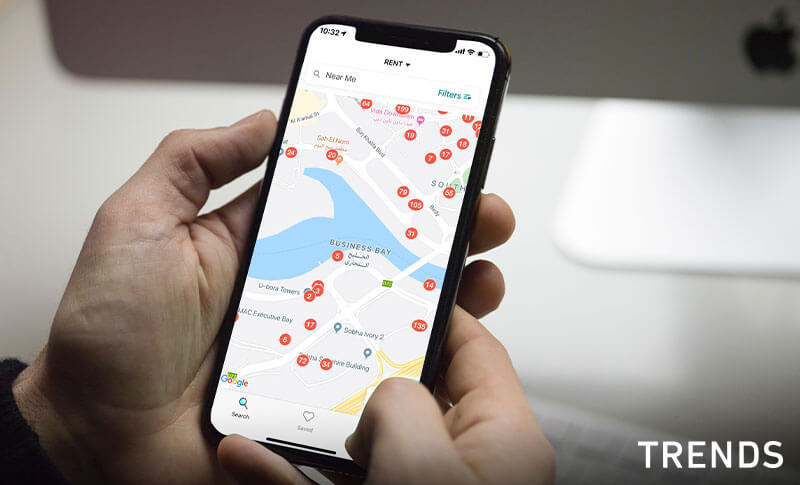
Technology makes it easy to build products for the modern property seeker

ROSE MARSH
Senior Product Manager, Property Finder
Anyone who has worked in a marketplace environment will understand the relative complexity of managing two sets of customer needs. In a functioning marketplace, these needs are well-aligned and growth is driven through the enablement of both customer segments. For example, in the property portal model, you have brokerages who need customers to sell or rent properties, and it is their quality content that the portal uses to acquire consumers who are then converted into customers for the brokerages.
At Property Finder, we are lucky to have easy access to a broad spectrum of clients with deep industry knowledge, many of whom help drive ideation for our client-side products, as well as some of our consumer products. However, understanding the millions of consumers who visit our portal each month and how we can help them to more easily find the perfect property can be more difficult. In this article, I’ll offer insights into how we do this at Property Finder, along with some of the key learnings from our consumer discovery efforts and how we’ve leveraged new technologies to act on these insights.
The new needs – how consumer sentiment and expectations have changed
I have worked in Consumer Product for many years now and have learnt and adopted several valuable techniques for gaining a greater understanding of consumer needs, from ‘persona development’ and ‘sentiment surveys’ to ‘diary studies’ and ‘user interviews’. There are many great books on this topic, including Inspired by Marty Cagan, Testing New Business Ideas by Bland and Osterwalder, and The Build Trap by Melissa Peri, if you want to find out more.
We regularly adopt many of these discovery techniques to understand our consumers, and Whatsapp Leads is a brilliant example of how an insight on consumer behaviour (mobile users are extremely active in the evening hours, but are more hesitant to call agents) inspired us to test a new lead source that found almost instant product-market fit among our consumers.
At Property Finder, one of the key ways that we understand the needs and sentiments of our consumers, and how they change over time, is to periodically survey them. Over the past year and a half, we have surveyed over 1,500 users and it’s taught us a great deal about what makes our users tick. A key takeaway for me this year has been the strong reduction in the number of buyers who’ve told us they have put their search on hold (down from 19 percent in 2018 to 12 percent in 2019), highlighting an upturn in consumer market confidence in 2019.
Therefore, our research tells us consumers are more keen to buy, and that they have greater market confidence. Yet, unfortunately, the picture is more complex than this. Through our research, we’ve identified over 40 unique questions that buyers and renters are likely to ask during their search, and we believe it is our duty to either answer them, or enable brokers to effectively answer them.
Data Partnerships: Smart Dubai and Zomato
Data partnerships are an extremely effective way of meeting the information needs of consumers at scale. Redfin’s Public Records are a brilliant example of a property portal leveraging data partnerships to provide detailed information to consumers. It would be an almost impossible task for Redfin to collect this level of detail for each listing across all of the counties and states in the USA but through data partnerships, they are able to collate and provide this information to consumers.
In 2019, we’ve taken considerable steps towards answering the many needs of our consumers through data partnerships. We’ve used Zomato’s data to power restaurant information on our property maps and with our newest partnership, with Smart Dubai, we will begin to provide many more valuable insights to our consumers. Our automatically-linked floor plans, being rolled out across our UAE listings, are a fantastic example of how additional listing information can drive consumer insight and conversion.
In 2019, we’ve used data partnerships, location services and user-generated content to answer more of our consumers’ key questions
Geolocation Technologies: 2GIS and Map Search
Location plays a huge role in the property selection process, both at a macro level (“which communities meet my personal and financial requirements?”) and a micro level (“is the property near a noisy road, bar or construction site?”, “does the property have easy access to main roads and transport links?”, “what amenities are close to the property?”).
In the UAE, more than any other market we operate in, the property map plays a critical role in a consumer’s journey with us. In addition to this, we now have over 10 percent of our mobile searches being completed using our Map Search. There are some extremely exciting technology companies operating across the Middle East in the Geographic Information System (or GIS) space. 2GIS are a great example of this, whose detailed map of the UAE offers a floor-by-floor view of The Dubai Mall and who power some of the geographic information on, for example, our property maps.
User-Generated Content (UGC): Building Reviews and Community Guides
A buyer once told me that before he bought in The Greens, he spent several weekends in the neighbourhood talking to locals. He wanted to get the hidden intel only real residents can give. And he was right – there are certain pieces of information that are most readily acquired from a community’s experts – its residents – such as the most-coveted unit type in the community, access to guest parking, issues with community services, and so on. While data partnerships have allowed us to provide property information at scale, we believe there are some pieces of information that are most effectively provided by real people. That’s why we’ve made our Building Reviews a central part of our property listing pages, and why our Community Guides are made up almost entirely of content created by residents of each community.
In 2019, we’ve used data partnerships, location services and UGC to answer more of our consumers’ key questions. In 2020, we plan to go even further. Our best-in-class in-house technology team makes acting on new opportunities ever easier – the key for us now is to ensure we use technology to address the current and most important needs of our consumers and business.